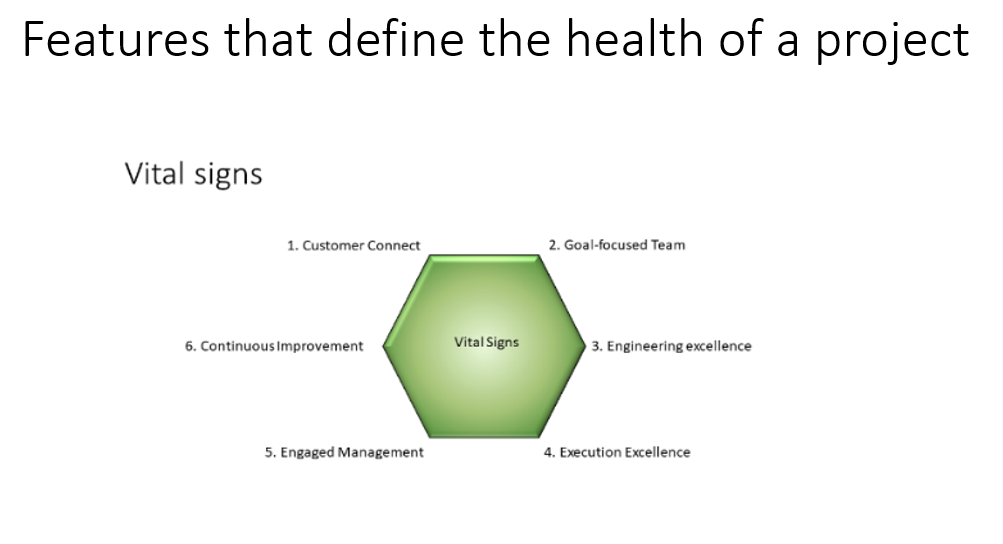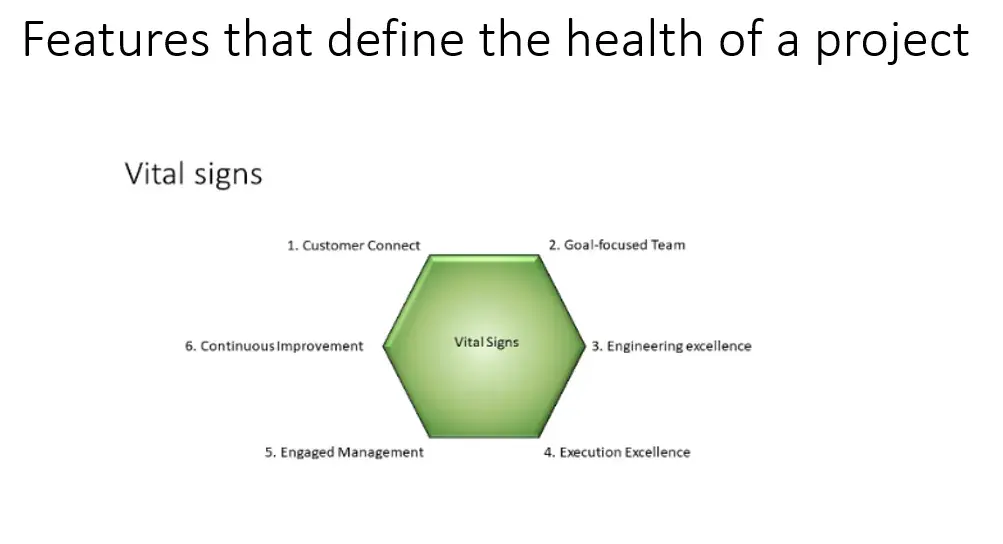(A modified version of this discussion with Ananth was used as the script for the PM Power webinar that was telecast live on July 31st, 2018.)
Project status showed GREEN till yesterday and today it is all RED! Does this sound familiar?
Maybe, it has been RED for a while, but somehow, the RED did not become visible until now. And this often happens at the eleventh hour when fire-fighting is the only option left.
How do you assess the true status or health of a project? And how can you provide your customer of an assurance of positive outcomes during all stages of the project?
I had an occasion to talk to my colleague, Ananth, exactly about this. I am reproducing the first part of our discussion below:
Paramu
Ananth, I understand that you have done a lot of work on this. Tell me, how did you come to think about this?
Ananth
There was a deafening silence in the conference room. Just 7 minutes into the project review meeting, the Project Manager was trembling and words were failing him. The Delivery Head of this 5000-people strong IT Service Provider was reviewing an important project along with the Head of the Project Review Board – a ‘terror’. Just five minutes into the review, the Head Reviewer had thrown a lot of what-if questions at the PM in a rather aggressive tone and was waiting for an answer. Finally, the Business Analyst broke the silence with a few responses and the meeting proceeded on a sombre note till the end.
I was one of the reviewers sitting in the meeting. I felt the Head Reviewer could have seen more of the presentation by the Project Manager before bombarding him with questions. The Head Reviewer smiled and said “what use are the details in a PowerPoint, when the PM is not able to demonstrate commitment and is clueless about customer’s intent. I could see it the PM’s language & posture in the first few minutes. The Project is doomed unless there is some serious correction”.
What can we learn from that? When we assess a project’s health, we need to look beyond the typical colours, numbers and slides. As a result, I conceived a framework that evolved over time from my experience in executing and reviewing projects over decades. This framework was then reviewed and revised based on the experience of my colleagues at PM Power who have an amazing project delivery record. A framework – that can be used to not just review health but be proactively applied to assure successful completion with a repeatable formula for this success.
Paramu
So, tell me, what is the need?
Ananth
The need is for a “better” product to be developed and this means the quality of the development practices and quality of the product suite during development; quality of the final deliverable and the ability to demonstrate, during the development process, an ongoing assurance of achieving the desired outcomes at the end of the program. It should be a “more healthily” developed product. We need to avoid this situation: the project was showing a GREEN status until yesterday and today it is all RED. Maybe it has been RED for a while but somehow did not become visible till now, like a watermelon! All we can do then is eleventh-hour fire-fighting.
Paramu
Interesting to know how it all started and its intent. I had a look at the framework that you created. What does it all mean?
Ananth
This means that managers need to be able to assess the true status or health of a project at any time during the development. So, the features that define the health of a project need to be monitored for ensuring that a project is doing well. It also means that quantitative metrics alone would not be able to accurately predict the heath of a project. We need qualitative inputs from all the stakeholders of the project. Different stakeholders may have different perspectives on the status of the project at any time. In fact, different stakeholders may have different perspectives on the same quantitative measurement. So, the quantitative metric should, therefore, be viewed jointly with and supplemented with stakeholder perspectives from their respective vantage points

Customer Connect: This is the number one vital sign. The other indicators are useless if you are not doing well in this. It is more than operational connect with the customer. It is about the partnership with the customer
Goal-Focused Team: This is mainly about ensuring that the single most important factor that influences a team’s performance is its focus on project goals. An individual’s goals and motivation should be aligned with that of the project.
Engineering Excellence: Within all these fancy things we should not forget that ultimately we need to create a software product that works. Engineering excellence is critical for achieving that goal.
Execution Excellence: This is about the planning and governance of the project. If you get this wrong it is difficult to get a well-engineered product.
Engaged Management: This is something whose importance is normally overlooked in projects. Management support for removing impediments and providing adequate resources in a timely manner is a key enabler for the success of the project.
Continuous improvement: All excellence required continuous honing and improvement. The concept of CI should be innate in projects and teams.
Paramu
What is a vital sign?
Ananth
A vital sign is the highest level key indicator of health. However, to get a picture of a vital sign we need observable units. These are called manifestations. Manifestations paint a picture of a healthy vital sign. By observing these manifestations, we are able to assess the health of a project and arrive at actionable improvements. It is the highest visible aspect of a project on which improvements can be applied. A component is a grouping of manifestations into focus areas of improvement.
Paramu
On the surface, the framework looks logical and fairly intuitive. Where does its power come from?
Click here to see Part 2 of the discussions
Click here to see Part 3 of the discussions




